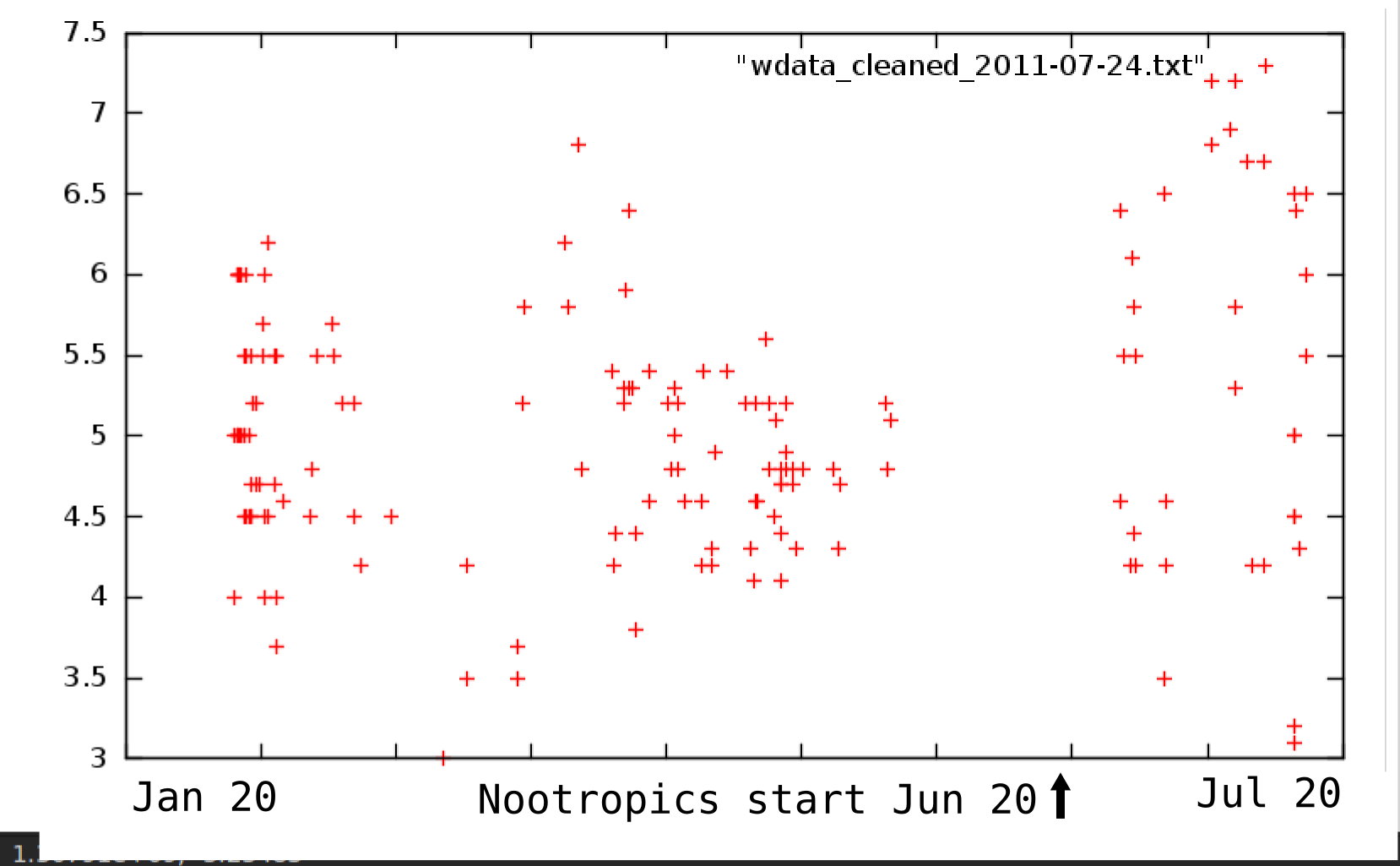At Thursday’s Quantified Self Silicon Valley Meetup (where I gave a talk called QS + Paleo = ?), Alexandra Carmichael introduced herself with the three words “no”, “headache”, and “today”. About five days earlier, she had started having migraine headaches every day. Before that, she hadn’t had a migraine headache in a year. After the headaches began, her husband, having read my Boing Boing story (about a woman whose migraines were mostly from cleaning products), suggested that her headaches might be caused by the Febreze they had just started using. They stopped using it. Because it can linger in carpets, etc., they cleaned their whole apartment with vinegar and baking soda, to get rid of all traces. That’s when Alexandra’s headaches stopped. When they started using Febreze, one of their daughters became very cranky. After they stopped using it and cleaned their apartment, she returned to her usual self.
Other people have found that Febreze gives them migraines. For example, R. Haeckler:
[Febreze] gives me terrible migraines. . . . Whenever I go to someone’s house who uses it I get a headache almost immediately that lasts the rest of the night.
And this woman (“No Febreze EVER. Gives me a headache and makes me dizzy”).
This is a good example of why n=1 experimentation is so important. The woman I wrote about for Boing Boing (Sarah) figured out, beyond any doubt, that certain cleaning products caused migraines. Yes, Sarah’s results were unusual. They “don’t generalize” to most people in the sense that most people don’t get migraines from cleaning products. But, as Alexandra’s story shows, they were still helpful — they helped Alexandra avoid migraines.
My writing about n=1 experimentation has emphasized learning widely-applicable truths — how to lose weight, sleep better, and so on. But this other use — learn stuff that is true only for you and perhaps a small subset of people (1%?) — is also important. Sarah’s n=1 experimentation doesn’t fit in the standard healthcare system. It was not suggested or encouraged by her doctors. No professor or researcher could write a paper about it — it’s too small. But it made a difference — first, to herself, now, to Alexandra. The results of n=1 experiments can be spread, however, in the new patient communities, such as the ones at PatientsLikeMe, MedHelp, and CureTogether (started by Alexandra and her husband).
When I submitted for publication my long self-experimentation paper, one of the referees decided he would find out if fructose water would help him lose weight (one of my examples). He discovered that fructose water made his fingers ache — he had a sensitivity to fructose he hadn’t known about. In his review, he said that these sorts of individual differences were not an argument against my method but actually favored it: We need n=1 experiments to fully understand human variation in health.
